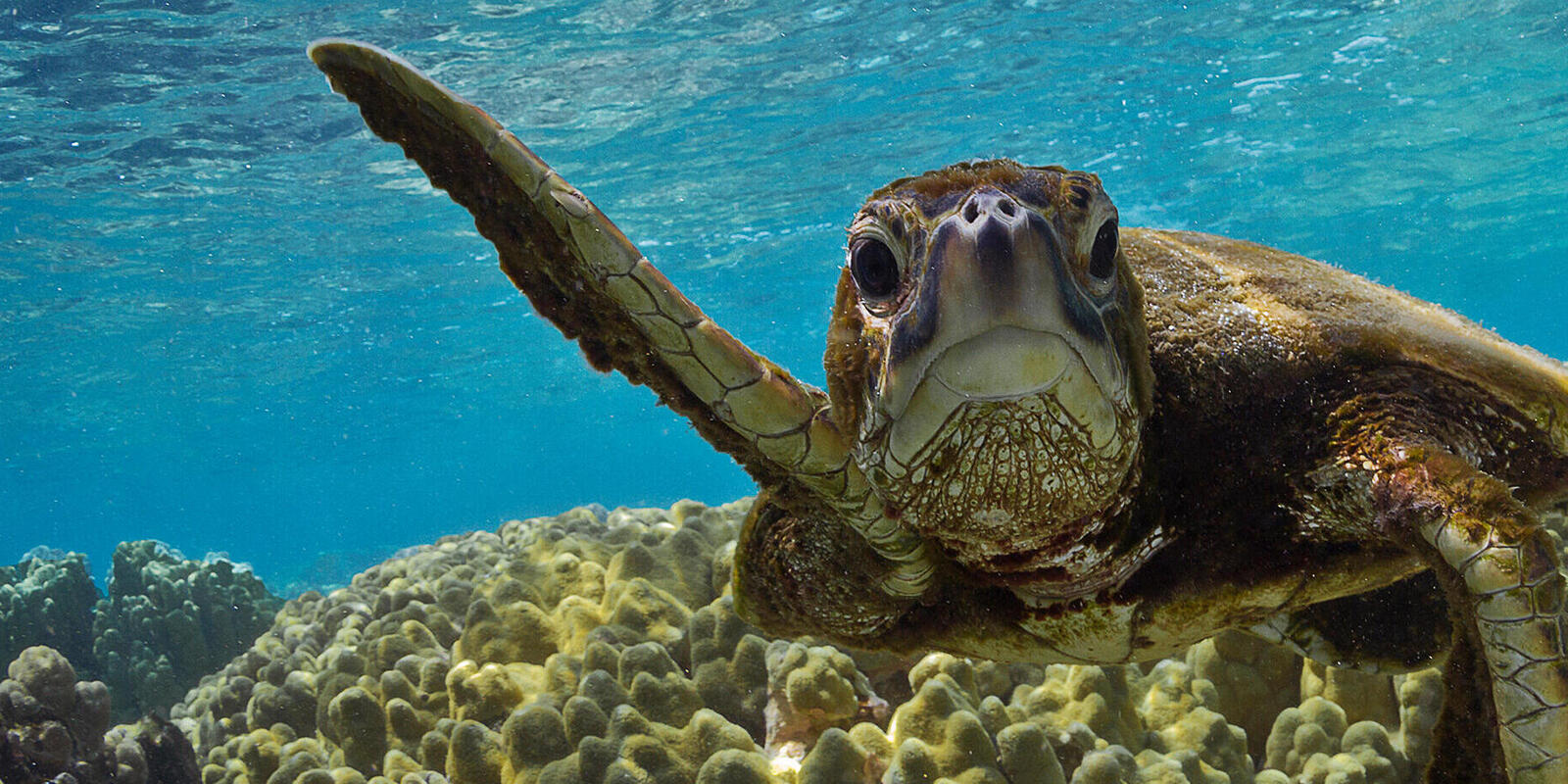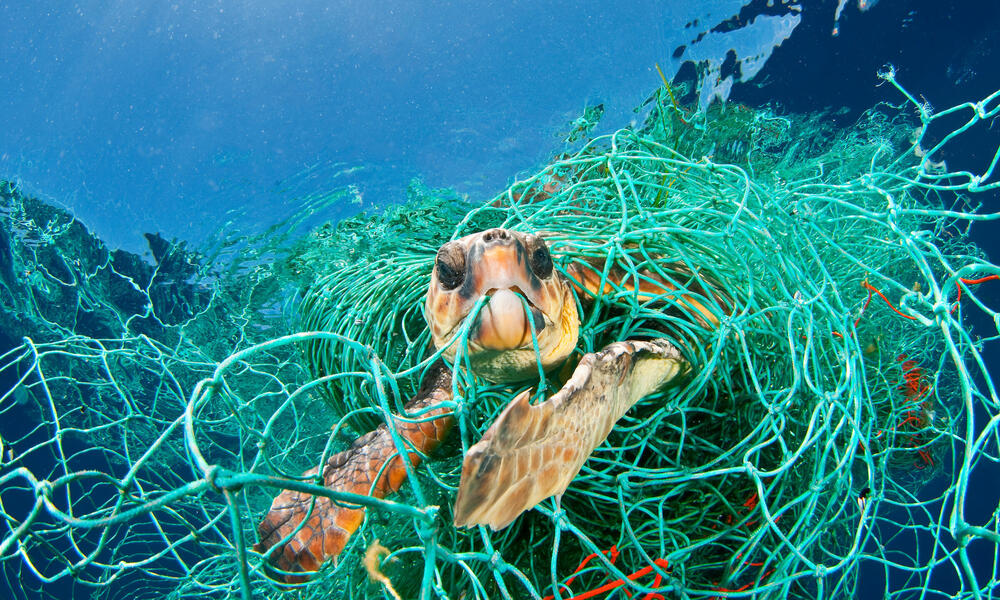Sea turtles survive in the ocean by using their streamlined bodies and strong flippers to swim efficiently. They also have adaptations like a powerful sense of navigation and the ability to hold their breath for long periods underwater.
These features help them find food, escape predators, and migrate across vast distances in the ocean. Sea turtles are remarkable marine creatures that have evolved unique strategies to thrive in their watery habitat. With their sleek bodies and powerful flippers, they are well-equipped for agile swimming and maneuvering through the water.
Additionally, their exceptional sense of navigation allows them to navigate across vast distances in the ocean with precision. These adaptations, combined with their ability to hold their breath for extended periods, enable sea turtles to forage for food, evade predators, and undertake long migrations. We will explore the fascinating ways in which sea turtles survive in their oceanic environment.
Physical Characteristics
Sea turtles are well-adapted to their ocean habitat, possessing a range of physical characteristics that enable them to thrive in the marine environment. These remarkable creatures have evolved specific features that aid in their survival, including their shell structure and flipper design.
Shell Structure
The shell of a sea turtle is a defining physical attribute that provides crucial protection and buoyancy. Composed of two main sections, the carapace and the plastron, the shell serves as a shield against predators and environmental hazards. The carapace, or upper shell, is typically streamlined to reduce drag in the water, enabling the sea turtle to navigate with agility. Meanwhile, the plastron, or lower shell, contributes to the turtle’s buoyancy, allowing it to remain afloat with ease.
Flipper Design
The flipper design of sea turtles is specifically adapted for efficient propulsion through the water. Their front flippers are elongated and paddle-shaped, providing the necessary surface area to generate powerful thrust during swimming. These flippers enable sea turtles to cover vast distances in the ocean, as they gracefully navigate the waters in search of food, mates, and nesting sites. The rear flippers, while smaller, also play a crucial role in steering and stability, contributing to the sea turtle’s remarkable maneuverability.

Credit: www.worldwildlife.org
Feeding Habits
Sea turtles are fascinating creatures that have adapted to survive in the harsh environment of the ocean. Their feeding habits play a crucial role in their survival, allowing them to thrive in their aquatic habitat. From their diet diversity to their foraging techniques, sea turtles have evolved to make the most of their marine surroundings.
Diet Diversity
Sea turtles have a diverse diet that varies based on their species and life stage. They primarily consume sea grasses, algae, jellyfish, and other marine plants, depending on their availability in their respective habitats. Some species, such as the leatherback turtle, also feed on a diet consisting of predominantly jellyfish. The ability to adapt their diet to what is available in their environment is crucial for their survival.
Foraging Techniques
Sea turtles employ various foraging techniques to obtain their food. They use their powerful jaws to bite through tough vegetation and capture elusive prey such as jellyfish. Furthermore, they utilize their streamlined bodies and powerful flippers to maneuver through the water, allowing them to chase down and capture their prey. These foraging techniques have evolved over time to maximize their efficiency in securing food.
Reproduction And Life Cycle
Sea turtles have a unique life cycle, starting as eggs laid on beaches. After hatching, they face numerous threats but some manage to survive and thrive in the ocean. Their ability to adapt to marine life and navigate long distances is crucial for their survival.
Sea turtles are fascinating creatures that have been around for millions of years. The life cycle of sea turtles is unique, and their reproduction behavior is fascinating. In this section, we will explore the nesting behavior of sea turtles, and how hatchlings survive in the ocean.Nesting Behavior
Sea turtles return to the same nesting beaches every year to lay their eggs. They prefer beaches with soft sand and vegetation that provides cover and shade. Female sea turtles dig a hole in the sand using their flippers and lay around 100 eggs at a time. After covering the eggs with sand, the female returns to the ocean, leaving the eggs to hatch on their own.Hatchling Survival
After around 60 days, the eggs hatch, and the baby turtles make their way to the ocean. They use the light of the moon to guide them to the water. Once in the water, they swim for several days until they reach the safety of floating seaweed. Here, they find food and shelter from predators until they are strong enough to swim in the open ocean. Sea turtles face many challenges during their life cycle, including loss of nesting beaches due to development, entanglement in fishing gear, and plastic pollution in the ocean. Understanding their behavior and life cycle is essential to protect and conserve these magnificent creatures for future generations.
Credit: www.nationalgeographic.com
Migration Patterns
Sea turtles are remarkable creatures that have adapted to life in the ocean in various ways. One of the most fascinating aspects of their survival is their migration patterns. These patterns showcase the incredible abilities of sea turtles to navigate the vast expanses of the ocean in search of food, breeding grounds, and suitable habitats. Let’s delve into the remarkable migration patterns of sea turtles and explore the factors that enable them to undertake these incredible journeys.
Long-distance Travel
Sea turtles are known for their ability to travel immense distances across the ocean. They undertake long migrations to reach their nesting beaches or foraging grounds, sometimes spanning thousands of miles. These journeys are a testament to their endurance and adaptability, allowing them to thrive in diverse marine environments.
Navigational Abilities
Sea turtles possess remarkable navigational abilities that enable them to traverse the ocean with precision. They rely on a combination of sensory cues, including the Earth’s magnetic field, the sun, and the stars, to orient themselves and maintain their course during migration. This remarkable sense of direction allows them to return to the same nesting beaches year after year, demonstrating their exceptional navigational prowess.
Threats And Conservation
Human Impact
Sea turtles face numerous threats due to human activities. Pollution, such as plastic debris and oil spills, can harm turtles by entangling them or being ingested. Coastal development disrupts nesting beaches, and artificial lighting can disorient hatchlings as they try to find their way to the ocean. Overfishing reduces the availability of food sources for turtles, impacting their survival. Climate change also poses a threat, affecting nesting habitats and altering ocean currents that are crucial for the turtles’ migration and foraging patterns.
Conservation Efforts
Several conservation efforts are in place to protect sea turtles and their habitats. Beach protection programs aim to safeguard nesting sites, while turtle-friendly lighting initiatives help reduce hatchling disorientation. Marine protected areas and fishing regulations contribute to the preservation of sea turtle habitats and food sources. Public awareness campaigns and community engagement are also crucial in promoting conservation and reducing human impact on these magnificent creatures.

Credit: environmentamerica.org
Climate Change Resilience
Climate change is one of the biggest threats to sea turtles, and it’s crucial to understand how they are adapting and surviving in this changing environment. Climate change resilience refers to the ability of a species to withstand and adapt to changes in their environment. Sea turtles have unique adaptations that help them cope with the effects of climate change and warming oceans.
Adaptation Strategies
Sea turtles have several adaptation strategies that help them cope with changing ocean conditions. One of the most important is their ability to regulate their body temperature. Sea turtles are ectothermic, which means they rely on the temperature of their environment to regulate their body temperature. This adaptation allows them to tolerate a wide range of temperatures, making them more resilient to changes in ocean conditions.
Another adaptation strategy is their ability to migrate long distances. Sea turtles can travel thousands of miles to find suitable nesting sites or feeding grounds. This adaptation allows them to move to areas with more favorable conditions, such as cooler waters or areas with more food.
Impact Of Warming Oceans
Sea turtles are particularly vulnerable to the effects of warming oceans. Rising temperatures can alter ocean currents and reduce the availability of food, which can have a significant impact on sea turtle populations. Warmer waters can also increase the prevalence of harmful algal blooms, which can be toxic to sea turtles and other marine life.
Additionally, warming oceans can affect the sex ratio of sea turtle hatchlings. The temperature of the sand during incubation determines the sex of the hatchlings. Warmer sand temperatures can result in more female hatchlings, which can lead to an imbalance in the population.
Conclusion
Overall, sea turtles have several adaptation strategies that help them cope with the effects of climate change and warming oceans. However, these adaptations may not be enough to protect them from the ongoing impacts of climate change. It’s crucial to continue monitoring sea turtle populations and taking action to reduce carbon emissions and mitigate the effects of climate change on marine ecosystems.
Conclusion
In the vast ocean, sea turtles display remarkable adaptations for survival. Their streamlined bodies and shell protect them from predators. Sea turtles navigate using Earth’s magnetic field. Conservation efforts are crucial to ensure their continued existence. Let’s work together to protect these fascinating creatures for future generations.






Leave a Reply